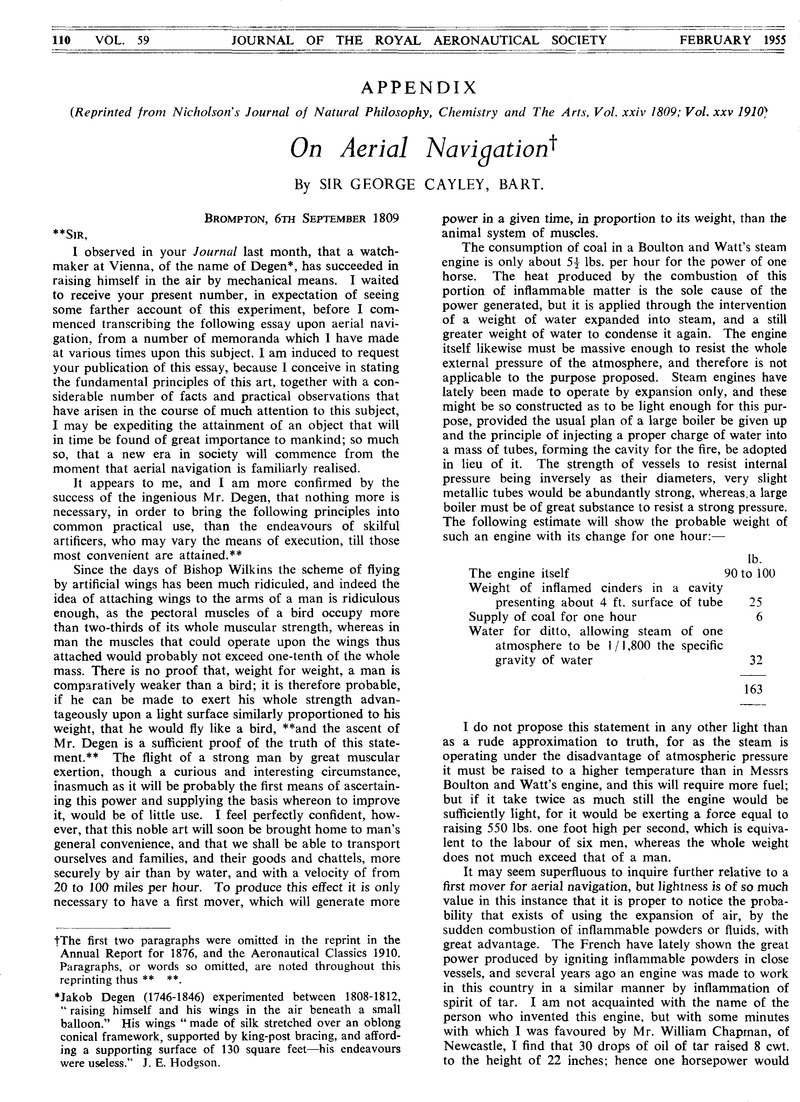No CrossRef data available.
Article contents
On Aerial Navigation†
Published online by Cambridge University Press: 28 July 2016
Abstract

- Type
- Appendix
- Information
- Copyright
- Copyright © Royal Aeronautical Society 1955
Footnotes
The first two paragraphs were omitted in the reprint in the Annual Report for 1876, and the Aeronautical Classics 1910. Paragraphs, or words so omitted, are noted throughout this reprinting thus.
References
Note on page 110* Jakob Degen (1746-1846) experimented between 1808-1812, “raising himself and his wings in the air beneath a small balloon.” His wings “made of silk stretched over an oblong conical framework, supported by king‐post bracing, and affording a supporting surface of 130 square feet—his endeavours were useless.” J. E. Hodgson.
Note on page 111 † Cayley uses the word resistance for lift or drag, is usually clear from the text.
Note on page 113 † In a letter to R. B. Taylor, written in 1842, Cayley, describing this experiment, said the first idea he “ever had on the subject of mechanical flight was at Southgate about the year 1792” (i.e. four years earlier). Cayley would then be about 19 years of age.
Note on page 113 1 Garnerin made his first descent by parachute from a balloon in England in 1802. He was the first man to make a parachute descent, in Paris, in 1797. Garnerin, in a description of his descent, wrote, “I endeavoured to modulate my gravitation, and the oscillation which I experienced increased in proportion as I approached the breeze that blows in the middle regions.”
Note on page 115 † Misprinted in the Annual Report 1876, and Aeronautical Classics, No. 1, 1910, as “continuing.”
Note on page 116 † Both in the Annual Report for 1876 and the Aeronautical Classics reprint of 1910, the wording was “as in the engine I have described at Fig. 12.” The description of Fig 12 (i.e. Fig. 4 (Plate 3) on a following page makes no reference to Degen. This is a shocking example of editing from an original for the purposes of a reprint. That Degen was a complete failure does not invalidate the principle of good editing.


